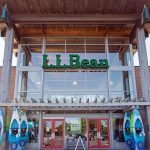A new survey of retailers released by CIT Group Inc. finds that while 47% of respondents believe the financial markets will turn around next year, 45% believe that consumer spending will not return to 2007 levels until 2011 or 2012.
CIT said in a statement that the continuing softness in the retail market has caused many retailers to reevaluate and adjust their business models. Other key findings among retail respondents include:
* 67% will stock less inventory than in 2008;
* 69% will expand online and direct selling;
* 56% will advertise more aggressively;
* 66% will offer greater discounts; and
* 68% will hold clearance and other sales prior to New Year’s Day.
The research report, “U.S. Small and Middle Market Outlook 2009: Retailers and Suppliers Take Stock of Economic Downturn,” examines how retailers and their suppliers are navigating through the current financial crisis.
“These results corroborate what we have been hearing anecdotally from the marketplace,” said Burt Feinberg, managing director and industry group head of retail finance at CIT. “Many retailers continue to be concerned about consumer demand and are following conservative inventory and pricing tactics in anticipation of the upcoming holiday season, trying to maintain liquidity, so that they can be better positioned for what is hopefully resumption in consumer spending in 2010.”
Jon Lucas, executive vice president and chief sales officer of trade finance at CIT, said, “The decline in consumer spending has trickled down from retailers to the manufacturers and vendors that supply them. Many of these suppliers are managing through this business cycle by cutting expenses, imposing more stringent credit terms on their retail customers, and doing less business with slow paying retailers. In addition, many have turned to factoring and credit protection services to protect the value of their accounts receivable, if they do not already have those relationships in place.”
Other core themes from the survey included:
- Cautiously awaiting the return of consumer confidence. While half of middle-market retailers saw their revenues decline over the past 12 months, 41% expect their revenues to grow over the next year. However, growth rates may be tempered by consumer spending issues; only about one-third (32%) indicated that they expect consumer spending to reach 2007 levels in 2010, while nearly 45% thought it would take at least until 2011 or 2012 for such spending to resume, and 17% said it would occur after 2012.
- Cutting costs and conserving cash: In light of the economic downturn, retailers have had to alter their strategies. Forty-six percent have reduced their staff levels, 42% halted planned expansions, 29% delayed store renovations, 29% re-merchandised their shelves, and 21% closed stores. In addition, 40% renegotiated their rent and 38% received other concessions from their landlords.
- Increased M&A activity on the horizon: Nearly half (48%) of all respondents expect M&A activity to increase over the next 12 months. They believe that the primary drivers of M&A activity will be the greater availability of credit (34%), reduced valuations (32%) and the need for weaker companies to merge (26%).
- Inventory issues: Many retailers have already reduced their inventory levels -43% indicated that their current inventory levels are lower or significantly lower than they were a year ago. The cuts may not be deep enough; as nearly half (48%) of respondents said that they should have carried less inventory during the first half of 2009. The end result: 46% of retailers have cut prices in order to accelerate inventory turns.
- Retailer bankruptcies impacting suppliers: Two-thirds (66%) of suppliers have been affected by a retail customer bankruptcy and 59% expect additional retail bankruptcies in the next 12 months. In addition, 23% of suppliers said that they are using factoring and credit insurance more to protect themselves from possible customer bankruptcies.
- Managing customer relationships. To protect their businesses, more than half (60%) of suppliers are doing less business with retail customers with weak finances; 60% are monitoring their accounts receivable more closely; 54% are imposing more stringent credit terms and 39% are requiring deposits for new customers. At the same time, 30% are offering incentives to retail customers who pay early.
About the study
The information in the U.S. Small and Middle Market Outlook 2009: Retailers and Suppliers Take Stock of Economic Downturn is based on the results of two surveys and a series of one-on-one interviews conducted by Forbes Insights in July and August 2009.
The first survey questioned 110 executives and financial decision makers at middle market retailers. All companies had revenues of $25 million to $1 billion. Respondents represented a broad range of retail segments, including specialty apparel, consumer electronics, appliances, sporting goods, convenience stores, housewares, and discount chains. All respondents held senior-level titles (including CEO, COO, CFO, and VP) and had functional responsibility for finance, strategy and business development, or general management.
The second survey queried 104 executives and financial decision makers at suppliers to the middle market retailer sector. All companies had revenues of $2 million to $1 billion; slightly under half weighed in at less than $50 million. These suppliers represented a broad range of market segments, including apparel and accessories, consumer electronics, housewares, footwear, home furnishings, and other retail. All respondents held senior-level titles (including CEO, COO, CFO, and VP) and/or held functional responsibility for a business unit or department. Over half were either a CEO or owner. The interviewees were not clients of CIT.















